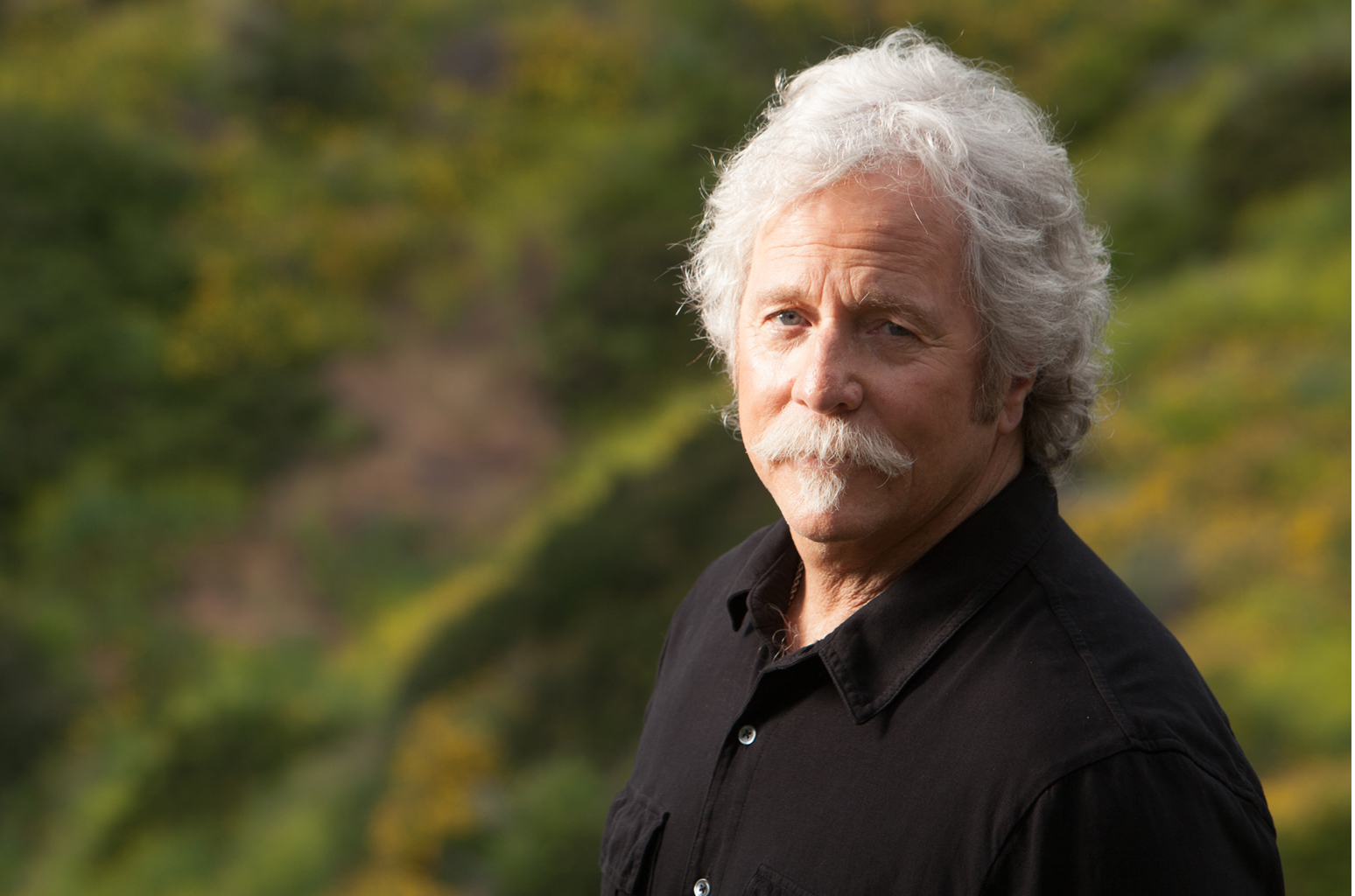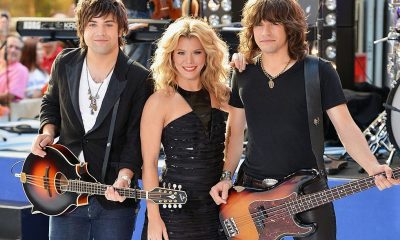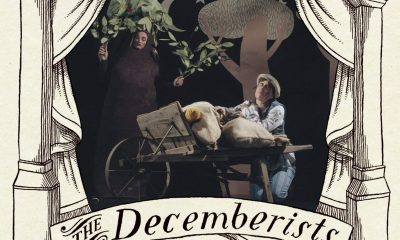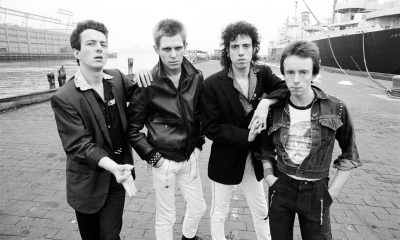Interviews
Catching up with Chris Hillman of The Byrds & The Desert Rose Band

Chris Hillman wants a Kindle. Schlepping a stack of books around when he goes on tour with longtime friend and collaborator Herb Pedersen or The Desert Rose Band is getting a little old. Though he skipped college in favor of playing music professionally with The Byrds, Hillman is a world history buff, and one who’s entirely self-taught. This burning desire to learn has been the bedrock of Hillman’s nearly fifty-year career.
As a teenager in Los Angeles, Hillman received his first instruction in mandolin from the Kentucky Colonels’ (who were then known as the Country Boys) Scott Hambly after convincing his parents to let him take the train from his family’s southern California ranch up to Hambly’s home in Berkeley.
A few bluegrass bands and countless gigs later, Hillman joined The Byrds as their bass player. The only problem? He didn’t know how to play the bass. But he picked it up quickly, and the band shot into stardom. Not confident as a lead singer, Hillman watched Gene Clark, Roger McGuinn and David Crosby, and he learned by osmosis.
In the late 1960s, Hillman left the band and joined ex-Byrd Gram Parsons. The two formed The Flying Burrito Brothers, a band that inspired acts like Whiskeytown.
The two men are responsible for writing “Sin City,” a song that took 20 minutes to compose, but when it comes to that classic tune, Hillman admits that he’s not entirely sure what the second verse (penned by Parsons) means: “I hate to say I don’t understand ‘we got our recruits’—I guess we’re talking about Vietnam—‘in their green mohair suits’. What the hell is that about? Our green mohair suits?” He pauses for a second, then smiles. “‘Sin City’ was real tongue in cheek. Gram had a great sense of humor.”
In the mid 1980s, Hillman fronted the Desert Rose Band, a move he calls “the end of an apprenticeship.” The country-rock supergroup—which also included Pedersen, John Jorgenson, Jay Dee Maness and Bill Bryson—had a number of Top 10 hits, including “He’s Back and I’m Blue” and “One Step Forward.”
“The greatest part of the Desert Rose Band [was that] the country music audience accepted us for who we were with no preconceptions,” Hillman says. “They had no idea about The Byrds. They weren’t judging the band or me on my prior associations. Some of the people didn’t know anything about that—couldn’t connect the dots. Desert Rose Band was accepted for what it was and it was the one band out of the many bands I was in that there was really no baggage.”
The band split in the early ’90s, but in 2008 they played a handful of reunion shows. This past summer, they played a few more. “[The reunion shows are] a lot of fun,” Hillman explains. “I don’t know if we’ll play again after this…if we do something else, that’s great. But there’s no pressure. It’s a wonderful time.”
Hillman and Herb Pedersen recently released a live album, titled At Edwards Barn.The pair revisit old classics and take a few chances, with Hillman singing lead on The Byrds’ famous “Turn, Turn, Turn,” a track on which he only played bass in 1965. Psychedelic rock staple “Eight Miles High,” which he had re-recorded earlier in his post-Byrds career, easily transforms into a bluegrass-flavored acoustic song. “Have You Seen Her Face,” a song Hillman wrote and sang on The Byrds’ 1967 album Younger Than Yesterday, is also on the record.
“I couldn’t really sing, but David Crosby sang this beautiful harmony over my lead vocal that made the song work. [But I still] thought ‘someday I’m going to re-cut that.’”
At Edwards Barn also includes two new songs which rank among some of his strongest songwriting work to date, which is saying a lot, considering that this is the man who had a hand in “Sin City.” While the beautiful, bilingual ballad “Tu Cancion” is fiction, Hillman reaches back into the past on “The Cowboy Way,” using childhood memories of his horse, Ranger, as inspiration for a song about a way of life that’s almost vanished.
The song that has captured Hillman’s imagination: “I’d really like to further the concept on “The Cowboy Way” into a sort of conceptual type album and work with this friend of mine, Willie Matthews, who’s a really well known Western artist and landscape artist and do something semi-autobiographical about California and the early vaqueros—they were amazing horsemen—which would involve some cool little story songs. That’s what I’d love to do. One more album before I hung up the recording, maybe.”
When it comes to songwriting, he’s no longer interested in the angst-ridden, lovelorn songs of his youth, explaining “I can’t approach it like I did thirty years ago. I can’t approach the unrequited love…I don’t want [to].”
Now at the point in his career where others might be content to rest on their laurels, Hillman is still touring, and feeling fortunate to do so. Most importantly, he is still learning. A lifelong fan of the big band music his parents listened to, he’s now taking lessons in the genre. “I can’t play [big band music],” he says. “But I have a friend of mine—82 or 83 years old—who was a very prominent session jazz guitarist. He worked on The Tonight Show with Johnny Carson’s band for 30 years…he played for Tommy Dorsey and he did a lot of Frank Sinatra and Dean Martin sessions. He lives near me and I go to his house and he teaches me guitar, teaches me those kinds of songs.”
“I’ll never do them onstage; I’m not that kind of singer. But I love listening and learning it.”
- Lists13 years ago
Top 10 Country Music Albums of 2010

 Interviews5 years ago
Interviews5 years agoJohn Rich – The Interview

 Song Reviews16 years ago
Song Reviews16 years agoTaylor Swift – “Love Story”

 Interviews5 years ago
Interviews5 years agoHoneyhoney on Hiatus: Revisit our 2008 Interview with Suzanne Santo

 Album Reviews14 years ago
Album Reviews14 years agoAlbum Review: Miley Cyrus – Can’t Be Tamed

 Song Reviews6 years ago
Song Reviews6 years agoThe Band Perry – “Hip To My Heart”

 Columns5 years ago
Columns5 years agoThe Link Between Folk Music’s Past and Present

 Columns5 years ago
Columns5 years agoIs Marketing Killing Rock and Roll?

